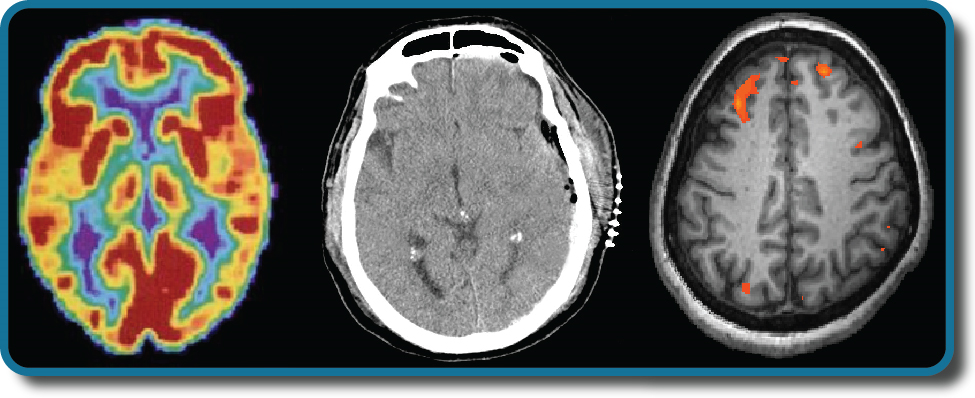3.1: Preludio a la Biopsicología
- Page ID
- 143227
Objetivos de aprendizaje
- Explicar los mecanismos biológicos que subyacen al comportamiento

¿Alguna vez has desarmado un dispositivo para saber cómo funciona? Muchos de nosotros lo hemos hecho, ya sea para intentar una reparación o simplemente para satisfacer nuestra curiosidad. El funcionamiento interno de un dispositivo a menudo es distinto de su interfaz de usuario en el exterior. Por ejemplo, no pensamos en microchips y circuitos cuando subimos el volumen en un teléfono móvil; en cambio, pensamos en obtener el volumen justo. Del mismo modo, el funcionamiento interno del cuerpo humano a menudo es distinto de la expresión externa de esos trabajos. Es trabajo de los psicólogos encontrar la conexión entre estos, por ejemplo, averiguar cómo los disparos de millones de neuronas se convierten en un pensamiento.
Este capítulo se esfuerza por explicar los mecanismos biológicos que subyacen al comportamiento. Estos fundamentos fisiológicos y anatómicos son la base de muchas áreas de la psicología. En este capítulo, aprenderás cómo la genética influye tanto en los rasgos fisiológicos como psicológicos. Te familiarizarás con la estructura y función del sistema nervioso. Y, finalmente, aprenderás cómo interactúa el sistema nervioso con el sistema endocrino.
References
Arnst, C. (2003, November). Commentary: Getting rational about health-care rationing. Bloomberg Businessweek Magazine. Retrieved from http://www.businessweek.com/stories/...care-rationing
Berridge, K. C., & Robinson, T. E. (1998). What is the role of dopamine in reward: Hedonic impact, reward learning, or incentive salience? Brain Research Reviews, 28, 309–369.
Chandola, T., Brunner, E., & Marmot, M. (2006). Chronic stress at work and the metabolic syndrome: A prospective study. BMJ, 332, 521–524.
Comings, D. E., Gonzales, N., Saucier, G., Johnson, J. P., & MacMurray, J. P. (2000). The DRD4 gene and the spiritual transcendence scale of the character temperament index. Psychiatric Genetics, 10, 185–189.
Confer, J. C., Easton, J. A., Fleischman, D. S., Goetz, C. D., Lewis, D. M. G, Perilloux, C., & Buss, D. M. (2010). Evolutionary psychology: Controversies, questions, prospects, and limitations. American Psychologist, 65, 110–126.
Gaines, C. (2013, August). An A-Rod suspension would save the Yankees as much as $37.5 million in 2014 alone. Business Insider. Retrieved from www.businessinsider.com/an-a-...in-2014-2013-8
Gardner, E. L. (2011). Addiction and brain reward and antireward pathways. Advances in Psychosomatic Medicine, 30, 22–60.
George, O., Le Moal, M., & Koob, G. F. (2012). Allostasis and addiction: Role of the dopamine and corticotropin-releasing factor systems. Physiology & Behavior, 106, 58–64.
Glaser, R., & Kiecolt-Glaser, J. K. (2005). Stress-induced immune dysfunction: Implications for health. Nature Reviews Immunology, 5, 243–251.
Gong, L., Parikh, S., Rosenthal, P. J., & Greenhouse, B. (2013). Biochemical and immunological mechanisms by which sickle cell trait protects against malaria. Malaria Journal. Advance online publication. doi:10.1186/1475-2875-12-317
Hardt, O., Einarsson, E. Ö., & Nader, K. (2010). A bridge over troubled water: Reconsolidation as a link between cognitive and neuroscientific memory research traditions. Annual Review of Psychology, 61, 141–167.
Macmillan, M. (1999). The Phineas Gage Information Page. Retrieved from http://www.uakron.edu/gage
March, J. S., Silva, S., Petrycki, S., Curry, J., Wells, K., Fairbank, J., … Severe, J. (2007). The treatment for adolescents with depression study (TADS): Long-term effectiveness and safety outcomes. Arch Gen Psychiatry, 64, 1132–1143.
Mustanski, B. S., DuPree, M. G., Nievergelt, C. M., Bocklandt, S., Schork, N. J., & Hamer, D. H. (2005). A genome wide scan of male sexual orientation. Human Genetics, 116, 272–278.
National Institute on Drug Abuse. (2001, July). Anabolic steroid abuse: What are the health consequences of steroid abuse? National Institutes of Health. Retrieved from www.drugabuse.gov/publication...-steroid-abuse
Squire, L. R. (2009). The legacy of patient H. M. for neuroscience. Neuron, 61, 6–9.
Tienari, P., Wynne, L. C., Sorri, A., et al. (2004). Genotype–environment interaction in schizophrenia spectrum disorder: long-term follow-up study of Finnish adoptees. British Journal of Psychiatry, 184, 216–222.
University of Utah Genetic Science Learning Center. (n.d.). What are genetic disorders? Retrieved from learn.genetics.utah.edu/conte...ers/whataregd/


